Macro photography is one of the most demanding disciplines of photography. The world of the small is a strange and unique place and makes some unusual demands on a photographer interested in capturing its beauty. Razor thin depth of field, extremely close working distances, and long exposure times combine to make macro photography a challenge. But it’s a challenge with a reward. Macros reveal a world that can’t be seen with the naked eye, alien landscapes, and strange creatures both beautiful and grotesque. I encourage you to try it. Many who do find a passion for macro photography they never knew existed.
Did you notice that I wrote macro and close-up photography in the title? What’s the difference, you ask? To get into that, we need to talk for a second about magnification. Every lens has some magnification factor usually expressed as a ratio (for example, 1:6). This ratio tells you what size the image of a real world object will be when projected by the lens onto your sensor or film. A ratio of 1:6 means that a 6 cm tall object will be projected at 1 cm onto the sensor. In other words, it will not be life size. A ratio of 1:1 means that a 6 cm tall object will be projected at 6cm onto the sensor—a life-size image.
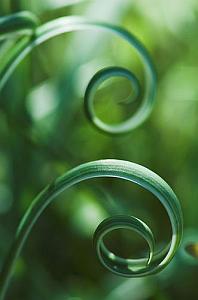
Golden spirals. 1/250s @ f/7.1
These are blades of grass. The relatively wide aperture renders
the background blade out of focus. “Golden” doesn’t refer to the
color but the golden ratio.
True macro lenses have a magnification of 1:1 or higher. Most non-macro lenses have magnification ratios significantly less than that (1:4, 1:6, etc.). Why is the magnification important? Macro photography is all about photographing very small objects and you want that object to fill the sensor to reveal as much detail as possible. 35mm film and digital sensors provide a very small area. Filling that area with your subject will give you images with the maximum amount of detail.
Some manufacturers play a little fast and loose with the term “macro” and slap the designation on lenses that only have a magnification of 1:2 or 1:4. Now, 1:2 can provide really great images. But I’d call those close-ups rather than macros. Just remember, 1:1 is twice the magnification of 1:2—it gets you that much more detail and that much closer to your subject. If you get really serious about macro photography, check the published magnification ratios on lenses rather than relying on the macro designation.
In the end, does it matter what you call it? It does to some people. Here’s my take: 1:1 is going to get you the best macro shots possible but a great image is a great image and I don’t much care what you call it.
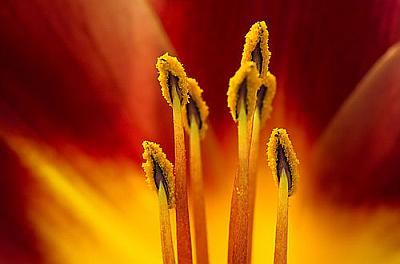
Lily. 1/40s @ f/20
The depth of field is so shallow even at f/20 that the petals of this flower
are rendered as a blurry background for the pollen covered stamens.
With all that technical mumbo-jumbo out of the way, what makes a great macro? Simple. The same things that make any photo great: composition, lighting, sharpness, etc. Just because you’re taking a photo of a bee doesn’t mean that the guidelines of composition no longer apply. You still have to think about subject placement in the frame, background elements, focus, depth of field, color, line, and form whether you are photographing ants or skyscrapers.
Probably the single most challenging aspect of macro photography is dealing with the depth of field. With such short working distances (often less than 20 inches), the depth of field becomes extremely narrow. We’re talking about millimeters here. And that makes focusing extremely difficult. The only way to increase it is to close down the aperture, but doing that increases the necessary exposure time. If you’re shooting stationary objects, the solution is to use a tripod. This will allow you to compose and focus precisely and gives you the ability to shoot with longer shutter speeds. If you’re shooting moving subjects (bugs, for example) a tripod won’t be of much use to you. You can either open the aperture to get suitable shutter speeds (realizing that will decrease your depth of field) or add some artificial light (a flash).
Because the depth of field is so shallow, you need to compose carefully to make sure that everything you want in focus is in the same plane. Either rearrange your subjects so that they are all the same distance from the lens or change your position to get the same effect. You can often focus more easily by just setting your focus on manual and moving your body closer or farther from the subject. Point and shoot compact cameras have an advantage over SLRs when shooting macros because they have an inherently larger depth of field. Using a compact, you will be able to use much larger apertures while retaining acceptable depth of field than you could with an SLR.
Another challenge is lighting and shutter speeds. Because of the small apertures you will probably need to provide some artificial light source to get your shutter speeds up. A flash can work well but at short working distances look out for the lens casting its shadow on your subject. It’s often better to use off-camera lighting, either off-camera flash or other lights.
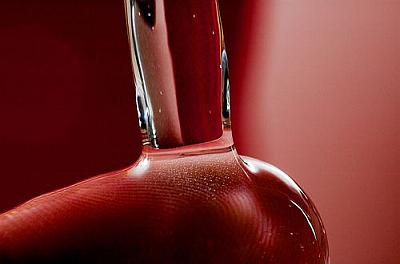
Flux. 1/500s @ f/22
This my finger under a stream of water. A flash provided the extra light
needed to capture this at f/22.
Finally, you’re going to be dealing with subject movement. Movement that you wouldn’t even notice at normal magnifications becomes exaggerated in macros. The slightest breeze becomes a tornado and the tiniest shake an earthquake. Time your shots for when the wind dies down. Anticipate when whatever is causing the movement will stop and be prepared to make your photo at that moment.
Shooting macros can be tough. Technically demanding, they also require a high degree of patience and determination. Trying to get a decent macro of a skittish critter can literally take hours of hunting, anticipation, and careful movements. It can be physically strenuous. But when you capture something special, a view of a world that people don’t normally see, it makes it all worthwhile.

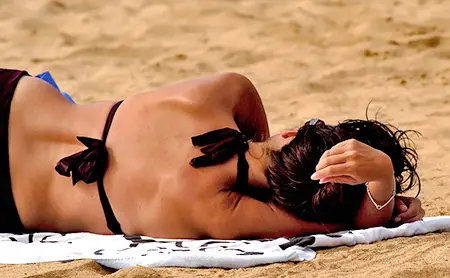
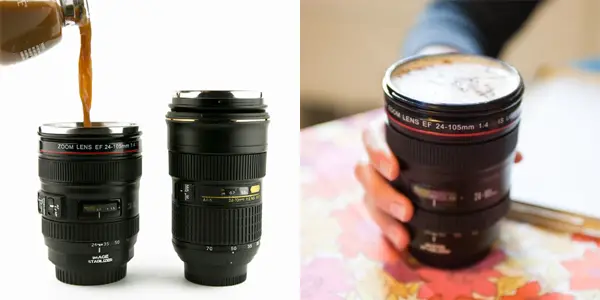
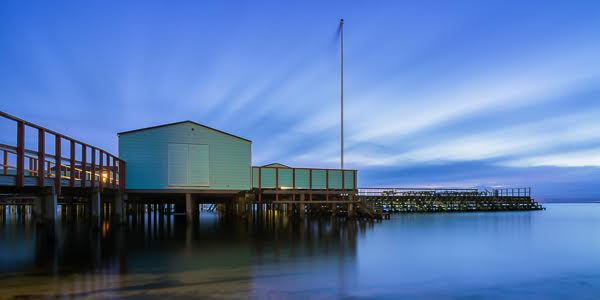





Great Info.
The outdoor Macro need to consider the
wind speed,
clouds formations,
time of photo’s to be taken,
Sun Angle
The Indoor Macro need to consider the
type of lights i.e. daylight or Warm white!!
indirect lights
Room paints color..etc.
Something I could never do with inexpensive auto-focus cameras. I’m finding the macro world an invigorating and challenging place to explore. Many shots do suffer from one or two shortcomings and as I keep practising at it I begin to discover what works for me or not. and sometimes I get “very” lucky!
Bees and some birds are very tricky too. Are the new digitals with motion stabilizing sesnsors worthwhile to investigate for macro applications where the photographer cannot utilize a platform or tripod? Or is it just a hyped feature for snap shot type cameras?
Thanks for this very useful review of the topic!
😉
Cheryl Binstock
For close shots I use a 1.7 tele extender with my 28-300mm Tamron lens. This will allow me to get down to half life size. A 4x dioptre lens added brings me to approx life size, actually slightly larger 1.14x and a reversed 50mm Pentax f1,8 from my S3 camera on the front with the 4x dioptre removed will get me to around 2.5 times life size.
In these instances I always use manual focussing and flash – a 360px Minolta from my 9000 35mm camera, with diffuser on my Dynax 7D. For table top set-ups I use my old Vivitar 283 which can be regulated down to as little as 1/32nd power, with diffuser and set it at around 45 degrees to the subject. This permits me to focus in close without casting lens-end shadows. although there is a certain amount of light fall-off it is not noticeable.
Subject for table-top is held in a crocodile clip and the background is sponge foam which curves up behind. This avoids hard background ‘join’ shadows and gives a background which varies from dark to a light grey accoring to rate of enlargement in the shot. I ‘creep’ in with the camera supported with both hands which are resting on the table until I am focussed up and then shoot. I always try different angles and vary my shots.
Indeed a very well written article on macro photography. I have been hooked on to it, but still waiting to buy the perfect macro lens to get those tiny insects.
In this booming digital age, there is tremendous scope for experimentation and improvement in this rather very challenging branch of photography.